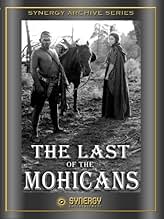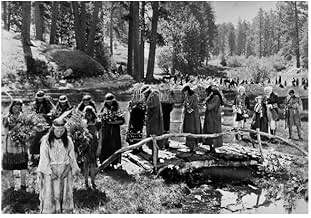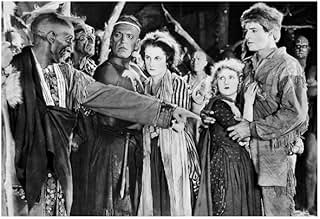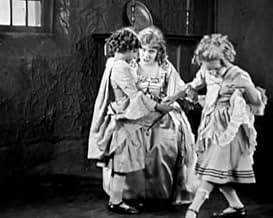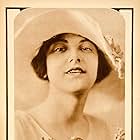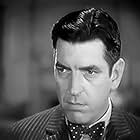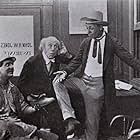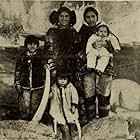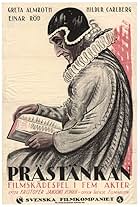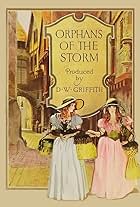IMDb RATING
6.7/10
1.5K
YOUR RATING
In the midst of the French and Indian War, the eldest daughter of a British officer develops an attraction towards an Indian ally who is the last living warrior of his tribe, the Mohicans.In the midst of the French and Indian War, the eldest daughter of a British officer develops an attraction towards an Indian ally who is the last living warrior of his tribe, the Mohicans.In the midst of the French and Indian War, the eldest daughter of a British officer develops an attraction towards an Indian ally who is the last living warrior of his tribe, the Mohicans.
- Awards
- 1 win
Alan Roscoe
- Uncas
- (as Albert Roscoe)
Theodore Lorch
- Chingachgook
- (as Theodore Lerch)
Jack McDonald
- Tamenund
- (as Jack F. McDonald)
Columbia Eneutseak
- Indian girl
- (uncredited)
Boris Karloff
- Indian
- (uncredited)
- Directors
- Writers
- All cast & crew
- Production, box office & more at IMDbPro
Storyline
Did you know
- TriviaThis film was selected to the National Film Registry, Library of Congress, in 1995.
- Quotes
Chingachgook: The palefaces are our friends. Go into the fort yonder and tell them of the danger that threatens.
- Alternate versionsIn 1993, Lumivision Corporation and the International Museum of Photography at George Eastman House, copyrighted a special edition which was distributed by Milestone Film & Video. It was tinted, had a music score composed and orchestrated by R.J. Miller and ran 73 minutes.
- ConnectionsFeatured in Fejezetek a film történetéböl: Amerikai filmtípusok - A western (1989)
Featured review
I just saw "Last of the Mohicans." I didn't expect much. I had seen other adaptations: the 1936 George B. Seitz movie and the Michael Mann remake of 1992. To me they all seem to lack the spirit of what is admittedly a rambling novel whose provocative subject matter is only partially realized. Cooper's problem was execution; he didn't understand how severely his story was compromised by unnecessary characters, needless plot devices, and ceaseless talk. Latter day film-makers steered around Cooper's problem by ignoring him and creating a story of their own, but in doing so they lost what was fine in his work.
Director Maurice Tourneur does not ignore Cooper, although he does cut through the crap. In a non-talking film the characters can't yap on the way they do in Cooper's fiction. Hawkeye's role is reduced. He has few scenes and is not the romantic lead Randolph Scott and Daniel Day Lewis would be in later adaptations. He is the homely, awkward, asexual woodsman Cooper describes. Tourneur chooses, rather, to focus directly on the tragic romance at the novel's core, between British colonial Cora Munro and Mohican hunk Uncas. He thereby rescues the film from becoming another "Birth of a Nation" with Wallace Beery's Magua standing in for Griffith's black-faced white men who try to rape white women.
Tourneur's technique is impressive. Camera perspective, lighting, and editing are well in advance of what was being done in 1920. The action on the Eastman print I saw seems a little fast. I'm not sure if it runs at the correct projection speed. Tourneur obviously under-cranked his camera during action sequences to give actors and extras the appearance of furious motion. These are only small criticisms, however.
As in all his films Tourneur reined in the actors' exaggerated facial expressions and theatrical gestures, which is perhaps why there are so many title cards explaining the actors' motivations. Barbara Bedford is restrained and natural as Cora, some might argue too restrained to be the passionate, dark-haired heroine of Cooper's novel. But Tourneur lets Bedford's quiet beauty act as a veneer masking a volatile nature. Her defiance of social and feminine conventions – showing attraction for a Native warrior, and impulsively sacrificing herself to protect her sister in the Indian town – affects us all the more because of her stillness. In Garbo such stillness was praised as mystique. So perhaps it is no coincidence that Tourneur's protégé Clarence Brown, who finished this film when Tourneur was injured, guided Garbo's early career beginning with "Flesh and the Devil" in 1926.
Director Maurice Tourneur does not ignore Cooper, although he does cut through the crap. In a non-talking film the characters can't yap on the way they do in Cooper's fiction. Hawkeye's role is reduced. He has few scenes and is not the romantic lead Randolph Scott and Daniel Day Lewis would be in later adaptations. He is the homely, awkward, asexual woodsman Cooper describes. Tourneur chooses, rather, to focus directly on the tragic romance at the novel's core, between British colonial Cora Munro and Mohican hunk Uncas. He thereby rescues the film from becoming another "Birth of a Nation" with Wallace Beery's Magua standing in for Griffith's black-faced white men who try to rape white women.
Tourneur's technique is impressive. Camera perspective, lighting, and editing are well in advance of what was being done in 1920. The action on the Eastman print I saw seems a little fast. I'm not sure if it runs at the correct projection speed. Tourneur obviously under-cranked his camera during action sequences to give actors and extras the appearance of furious motion. These are only small criticisms, however.
As in all his films Tourneur reined in the actors' exaggerated facial expressions and theatrical gestures, which is perhaps why there are so many title cards explaining the actors' motivations. Barbara Bedford is restrained and natural as Cora, some might argue too restrained to be the passionate, dark-haired heroine of Cooper's novel. But Tourneur lets Bedford's quiet beauty act as a veneer masking a volatile nature. Her defiance of social and feminine conventions – showing attraction for a Native warrior, and impulsively sacrificing herself to protect her sister in the Indian town – affects us all the more because of her stillness. In Garbo such stillness was praised as mystique. So perhaps it is no coincidence that Tourneur's protégé Clarence Brown, who finished this film when Tourneur was injured, guided Garbo's early career beginning with "Flesh and the Devil" in 1926.
- mhesselius
- Jul 23, 2010
- Permalink
- How long is The Last of the Mohicans?Powered by Alexa
Details
- Release date
- Country of origin
- Languages
- Also known as
- El último Mohicano
- Filming locations
- Production company
- See more company credits at IMDbPro
- Runtime1 hour 13 minutes
- Color
- Sound mix
- Aspect ratio
- 1.33 : 1
Contribute to this page
Suggest an edit or add missing content

Top Gap
By what name was The Last of the Mohicans (1920) officially released in Canada in English?
Answer
